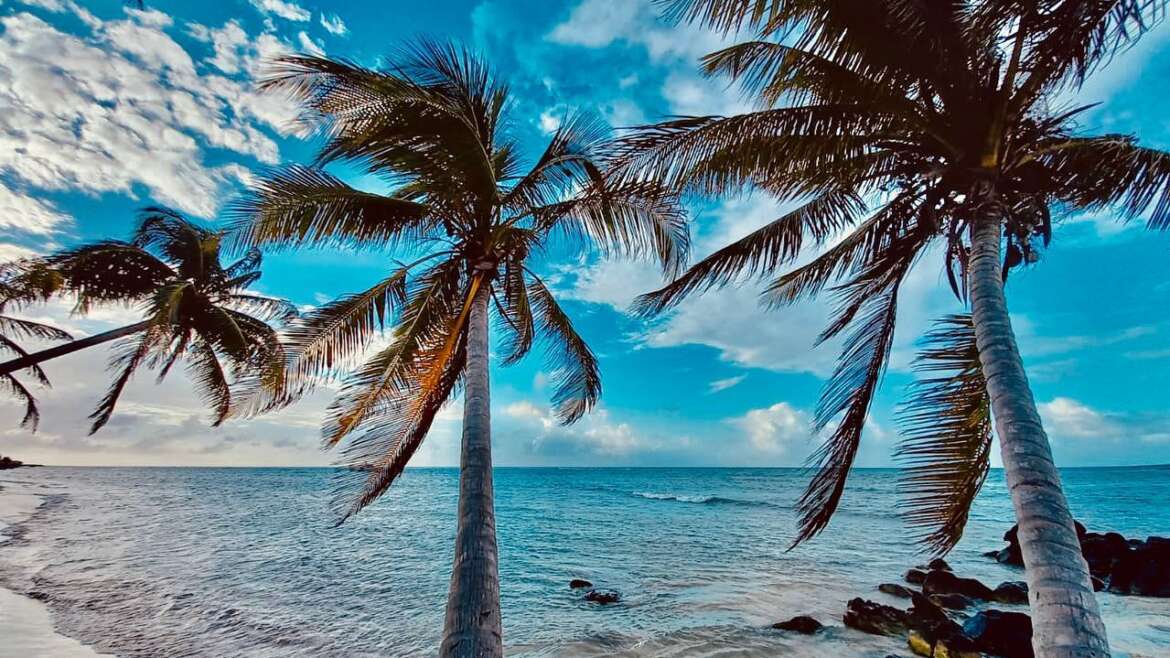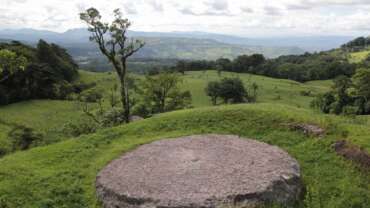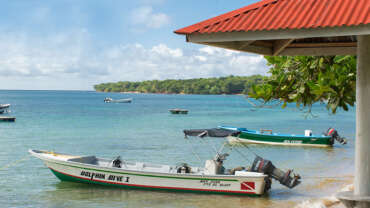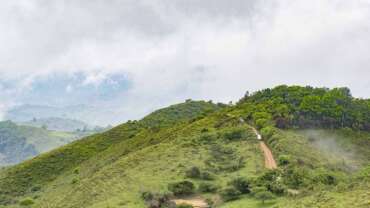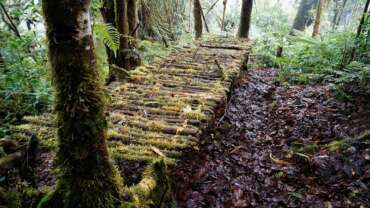Experiences in Nicaragua
Nicaragua: A Land of Breathtaking and Unexplored Regions
Nicaragua, a nation of geographical superlatives, is the largest country in Central America. Its diverse landscape covers an area of 129,494 square kilometers with a broad range of climates, regions and topographies for visitors to discover. In a country that remains 80% undeveloped, travelers can enjoy an incredible array of experiences ranging from hiking through rain forests and jungles, discovering deserted beaches, diving untouched reefs, climbing active volcanoes, surfing the perfect wave or just simply exploring the unexplored.
The country known as the “land of lakes and volcanoes” is primarily divided into three regions: the North-Central Mountains, the Pacific Coast and the Caribbean Coast.
Beaches in Nicaragua
Puerto Sandino
Without a doubt one of the best waves and the longest in Nicaragua. Located near the highway to the city of León, this sandbar is the creator of waves from 300 to 500 meters. It is excellent for tubing and is formed with medium and large swells. It works only at low tide. It can only be reached by a 15-minute boat ride. On the beaches of Miramar, good winds create five types of waves allowing point breaks, beach breaks, and slabs.
Playa Popoyo
It has the most famous and consistent waves in Nicaragua. You can surf on all tides. This “A” shaped wave creates large walls from right to left with occasional barrels. Paddling further out to sea, or with a boat, you can reach the reef outside Popoyo which is a real challenge. It is without a doubt one of the heaviest waves in Central America. It works best with medium boards and during low tide. Located in the municipality of Tola, Rivas department, this beach is recommended only for professionals and kamikazes. Shallow reefs must be taken into account. The wind blows towards the sea more than 300 days a year.
Playa Colorado
There are two famous waves on this beach. The wave of the Colorado River is formed at the mouth of an estuary, it throws perfect barrels on the right and left. It is without a doubt one of the best waves in Tola. This beach is located in the private tourist development “Iguana”, in the department of Rivas. The other wave is Panga Drops. This heavy wave is shaped like a horseshoe and manages to maximize the size of any incoming swell. It is known for its fast starts, huge walls, and occasional barrels. Works best with medium boards and during low tide.
Playa Aserradores
In the municipality of El Viejo, northeast of Chinandega. This beach is different for its black sands and volcanic sediments. The wave is known as “El Boom”, it is popular for its high peaks and for being hollow. With a short boat trip, you can also reach an island that has two more breaks that guarantee optimal conditions for surfing.
Playa San Diego
It is located in the Gran Pacifica tourist development, in Villa El Carmen, department of Managua. It is one of the most preferred waves by professional surfers. Its rocky and coral surface makes for a solid, fast, and consistent left wave that is easy to pipe. It surfs well with medium and large swells and works best at high tide.
Cycling in Nicaragua
“Recognizing the uniqueness, longevity, and versatility of the bicycle, which has been in use for two centuries, and which constitutes a sustainable, simple, affordable, reliable, clean and ecological means of transport that contributes to environmental management and benefits health, the General Assembly decided to declare the 3rd of June as World Bicycle Day,” writes the United Nations on its website.
Nicaragua offers numerous sites and activities for those who love traveling through urban cities, rural communities, or to be in one with nature. Cycling is one of the things you can do in the Land of Lakes and Volcanos.
These are some of the places where you can cycle to enjoy and be in contact with the natural beauties that Nicaragua has.
Cerro El Arenal Natural Reserve, Matagalpa
Of 1,428 square kilometers, located 15 kilometers from the city of Matagalpa, on the highway to Jinotega, it has beautiful landscapes, diversity of flora and fauna, it houses cloudy forests interspersed with shade coffee plantations, conducive to the development of sustainable rural tourism, agroecological tourism, and rural community tourism. Its pleasant and cool climate makes it an attractive destination for mountain biking.
Cerro El Ventarrón, between Managua and Masaya
It is the ideal site for cycling and landscape photography enthusiasts. Located behind the Masaya volcano, at kilometer 26 on the Ticuantepe (Managua) – San Juan de la Concepción (Masaya) highway, it is a journey of medium difficulty. The first hours of the day are perfect to travel to this area of the Nicaraguan Pacific region.
Tepesomoto La Patasta Natural Reserve
Between the municipalities of Somoto, San Lucas, Las Sabanas, and San José de Cusmapa, Madriz, with heights of up to 1,700 meters. Valuable area for its flora, fauna, climate, landscapes, and natural attractions. Besides cycling, it is ideal for hiking, camping, and rappelling.
Cerro Negro volcano
In this destination, in addition to the San Cristóbal and Momotombo volcanoes, the short film “Volcánico, an adventure on a mountain bike” was filmed, which won an Emmy for its technical achievements. Here too, Eric Barone the “Red Baron” was not afraid to jump and set a world record for speed overland with his mountain bike on the slopes of the youngest volcano in Central America.
Pilas El Hoyo Complex
Shared with the municipalities of León and La Paz Centro, its extension is 11,569 hectares and is made up of several volcanic buildings that share the same base; being the most prominent the Pilas volcano, with its active crater El Hoyo of 1089 meters; towards the west of the same one rises the Cerro Negro; towards the south rises the truncated and extinct cone of Asososca or Ajusco at the base of which the crateric lagoon of Asososca opens, which is commonly known also as the Tigre lagoon. The landscape, flora, and fauna make it a unique place to travel on two wheels.
Jinotega – San Rafael del Norte Highway
The highway in excellent condition, pleasant climate, sinuous walkway, scenes of rural life in the area, tourist services, and a magnificent view of Lake Apanás will be the perfect complement to venture out pedaling in this part of northern Nicaragua.
Dipilto, Mozonte and San Fernando
Dipilto, with mountains of coffee and pine forests, through which you can take an adventure tour enjoying the pleasant climate and delighting in the exquisite aroma of pine. Mozonte, immerses you in primitive times; touring its productive fields, waterfalls and handicrafts make your stay pleasant, and San Fernando offers you the route to the highest point in Nicaragua, Cerro Mogotón, here you can observe landscapes of pines, rivers, and waterfalls, at the finish line a rich cup of coffee.
Sierra de Amerrique
The extensive mountain range determines the climatic conditions of the department of Chontales. Its formation is related to an ancient volcanic activity. Formerly it was inhabited by fierce people, whose vestiges are scattered throughout the fragile landscape.
Ometepe Island
The circuit of 8, includes skirting the island that has the shape of an eight, the natural benefits offered by the oasis of peace converge on this route; Institutions and private entities organize events of up to 50 kilometers for bicycle lovers, the best event is the one that you can undertake whenever you like.
Golden Triangle in Carazo
It includes the municipalities of San Marcos, Jinotepe, and Dolores, the attractive thing is the climate because it is an area of great vegetation, this is where the greatest aquifer recharge of Carazo is concentrated, it is a productive area for fruits such as pineapple, oranges, mandarins, mangoes and of course you can see the coffee and agroecological farms. Parallel to cycling, observe a great variety of birds.
Typical Foods and Beverages
It is a tradition of the towns located on the plateau, from Masaya to Nandaime, to feed pilgrims and promisees during the festivities dedicated to the town’s patron saint. Most of the dishes derive from maize. Jinotepe, Diriamba, and San Marcos are famous for their festive dishes called “picadillo, ajiaco, and masa de cazuela or indio viejo”.
In Masaya, they go all out with corn pastries, foods, and drinks called rosquillas, chicha de maiz, corn with ginger, nacatamales, arroz aguado, pig’s head, pork with casaba and oxtail soup.
The celebrations of Patron Saints in the towns of the northern, western, and northeast departments of the country, the custom of giving food to those who make the pilgrimage is not practiced. However, as an exception, every December 6, in the town of El Viejo, Chinandega, they celebrate the cleaning of the silver and feed the visitors rosquillas and tiste.



